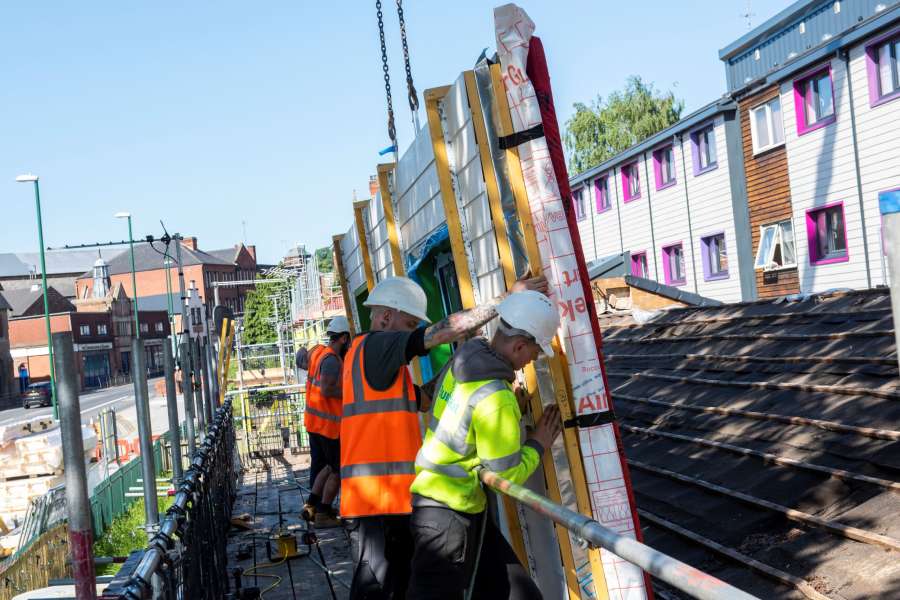

Report confirms that offsite construction will play a crucial role in delivering low carbon buildings.
A new report, published by the British-based Supply Chain Sustainability School, unveils nine significant opportunities for offsite manufacturers to support their clients in achieving low carbon construction projects, whether it be new builds or retrofitting existing buildings.
The urgent need for decarbonisation in the built environment industry, encompassing both existing and new structures, as well as the reduction of embodied carbon in building materials, construction, and maintenance, is emphasised.
Despite the widely acknowledged potential of offsite construction processes in reducing whole life carbon, evidence has been inconsistent.
Based on insights from over 40 organisations involved in homes, commercial, public, and infrastructure projects, the report titled ‘Whole Life Carbon Guidance for Offsite Construction’ identifies opportunities and challenges for carbon management and reduction within the offsite sector.
These opportunities include improved material and resource efficiency through pre-manufacturing, reduced fuel and energy consumption in logistics and onsite operations, and enhanced confidence in operational energy performance through standardised designs.
Existing studies have shown that significant carbon reductions can be achieved in energy and fuel use for transport and construction processes, with savings of 30-40% identified, even when accounting for factory energy consumption. However, the majority of embodied carbon in construction projects originates from materials and manufacturing processes.
The report proposes that Design for Manufacture and Assembly presents a significant opportunity for driving emissions savings in the product stage, citing evidence across homes, schools, and commercial projects.
Early collaboration between manufacturers and design teams is recommended to fully realise low carbon design options, and to facilitate robust whole life carbon estimates which are likely to become mandatory in the future.
The report also emphasises the importance of embedding processes for collecting and communicating activity data among manufacturers and contractors.
Andrew Shepherd, Managing Director at TopHat Communities, commented, “We all know carbon is a problem, but without knowing how much of a problem, it is very difficult for us to start addressing some of the key problem areas. This report provides guidance on how to start assessing whole life carbon and understanding the impact each stage of the development cycle has on the environment.”
Naomi Pratt, lead author of the report and Consultant at Action Sustainability, added, “It’s been really encouraging to see projects cutting embodied carbon through offsite techniques. What these have in common is a design approach driven by material and carbon efficiency. What we need to see now is more organisations adopting this focus and sharing data.”
Ian Heptonstall, Director of Supply Chain Sustainability School, stated, “The good news from this report is that yes, Offsite and MMC (Modern Methods of Construction) can help us tackle the climate emergency. However, as the evidence suggests, we are currently missing many opportunities and it’s clear as an industry we need to think and act differently. My challenge to those not at the forefront of tackling carbon is: will you act now and make a difference, or be left behind whilst your customers transition to a low carbon economy?”
The report highlights examples of best practices that are crucial for achieving whole life carbon reduction and the journey towards net zero. The authors urge organisations in the sector to show leadership, seize opportunities, and share data and experiences.
Sign up and download it HERE